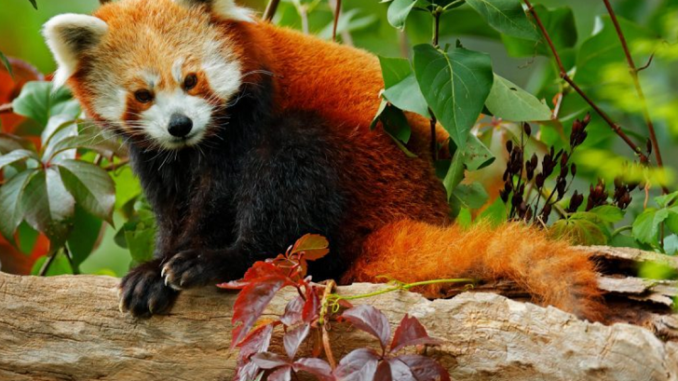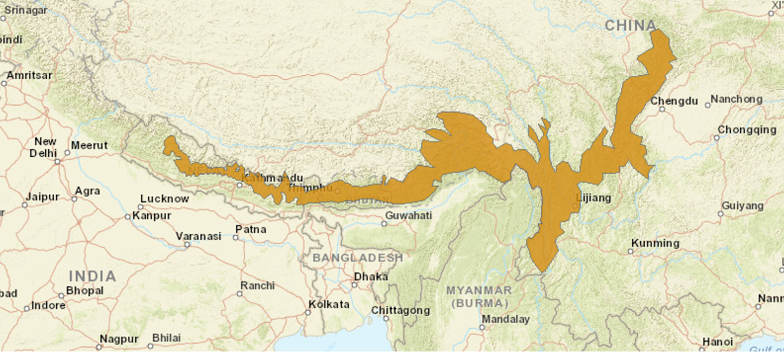
Red pandas (or lesser pandas) have long, fluffy striped tails like a raccoon, and faces and diets that resemble a giant panda’s, but they clean themselves like a cat.
However, they are not raccoons, bears, or cats — they were until recently thought to be the only living species in a genus of their own (Ailuridae). However in recent years, scientists have determined that ther are actually two separate species – the Himalayan Red Panda (Ailurus fulgens) and the Chinese Red Panda (Ailurus styani).
Red pandas are not as abundant as they used to be. The International Union for Conservation of Nature and Natural Resources (IUCN) has red-listed them as being vulnerable to extinction as the number of red pandas in the wild is decreasing. The IUCN estimates there are only about 10,000 red pandas left in the wild, but because red pandas are only active at night, it is difficult to get a firm count.
The Red Panda is a national second-class protected species in China—with both hunting and trade prohibited—and is listed in Appendix I of the Convention on International Trade in Endangered Species of Wild Fauna and Flora (CITES). It was upgraded to Endangered on the IUCN Red List of Threatened Species in 2015.
Conservation initiatives of red pandas in China, include laws and regulations, public education, nature reserves and important conservation projects. Specifically, these include important conservation projects such as the Natural Forest Protection Project, Grain to Green Project, National Wildlife Conservation and Natural Reserve Construction Project and National Park Project. These projects play an important roles in red panda conservation in China.
China has about 46 nature reserves within red panda ranges covering 25,668 sq km, including:
- 32 reserves in Sichuan (3,000 – 3,400 individuals)
- 8 reserves in Yunnan (1,600 – 2,000 individuals)
- 6 reserves in Tibet (1,400 – 1,600 individuals)
Distribution of Red Panda

- Chinese: 小熊猫 xiǎoxióngmāo /sshyaoww-sshyong-maow/ ‘small bear-cat’
- Appearance: raccoon-like, with reddish-brown fur
- Diet / food: Red pandas are technically carnivores, but they’ve adapted to feed mostly (95%) on bamboo. They also occasionally seek out sources of protein, such as insects and bird eggs.
- Size: around 50 cm
- Weight: around 5 kg
- Life expectancy: 8–10 years
- Distribution: China, Nepal, India, Bhutan, Myanmar,